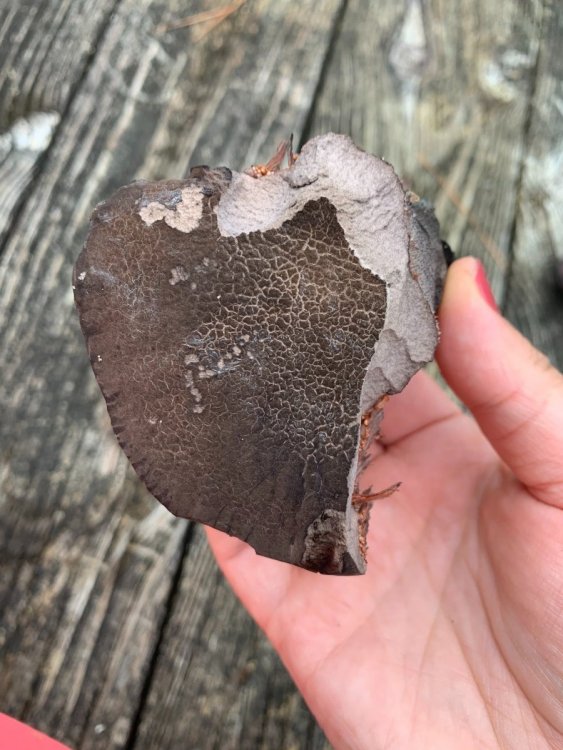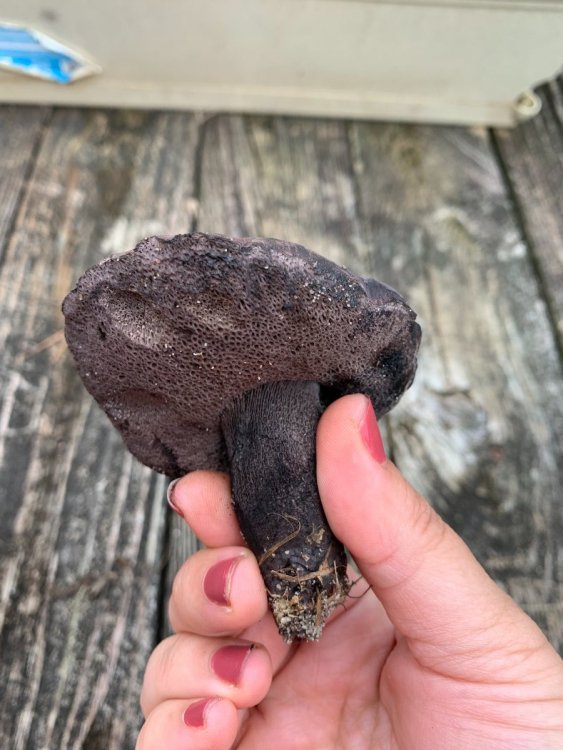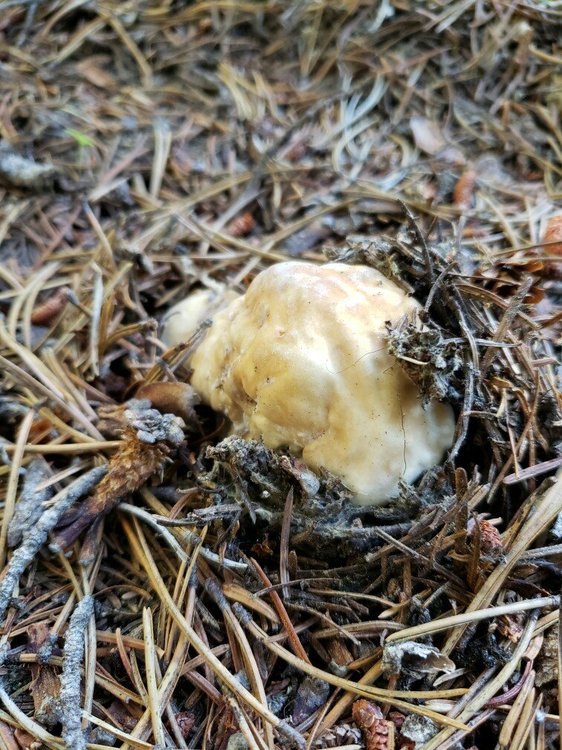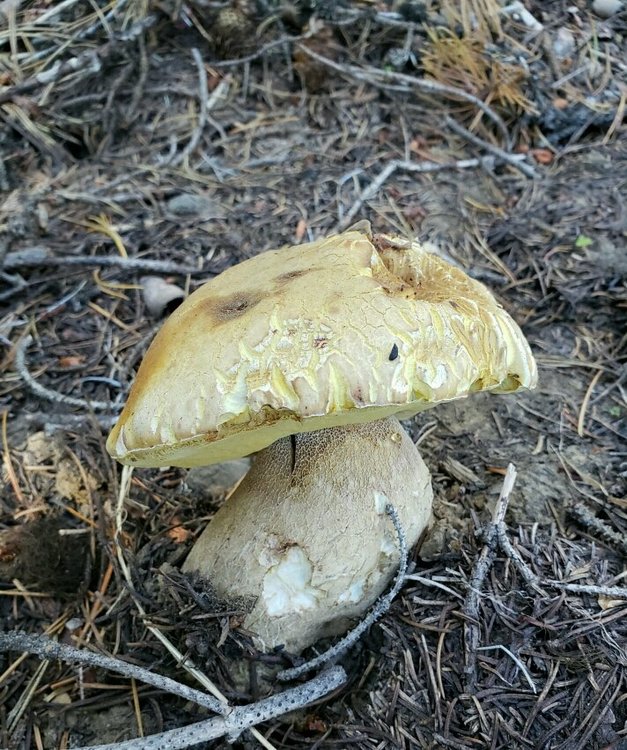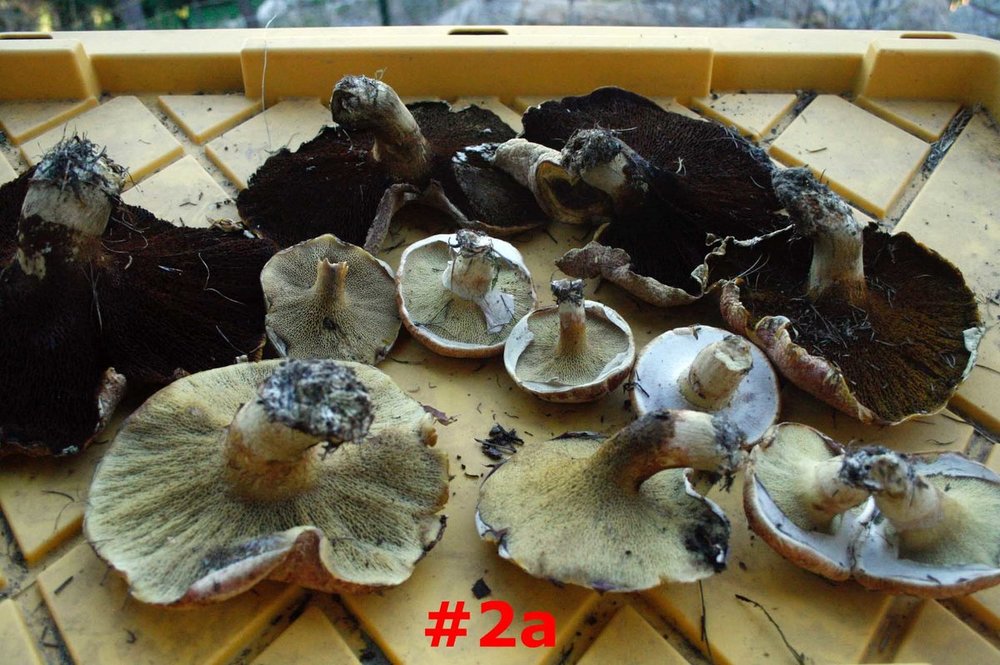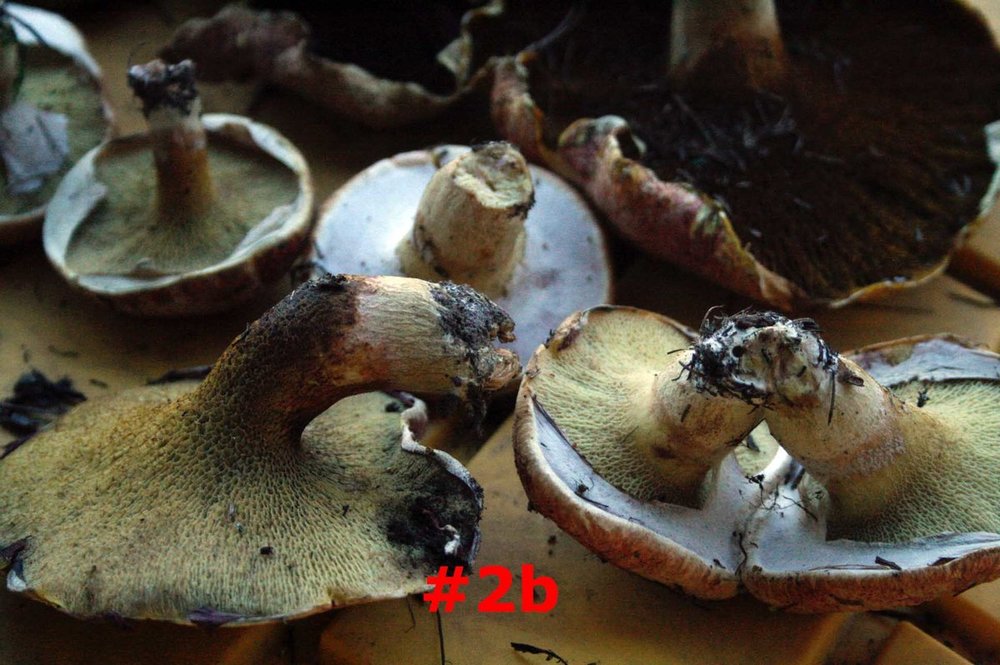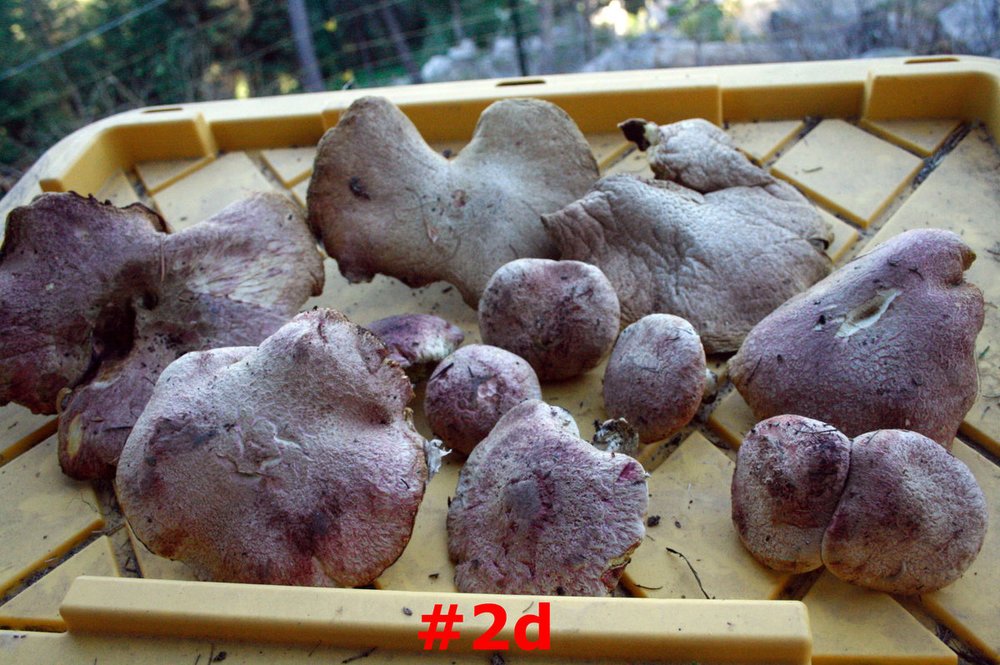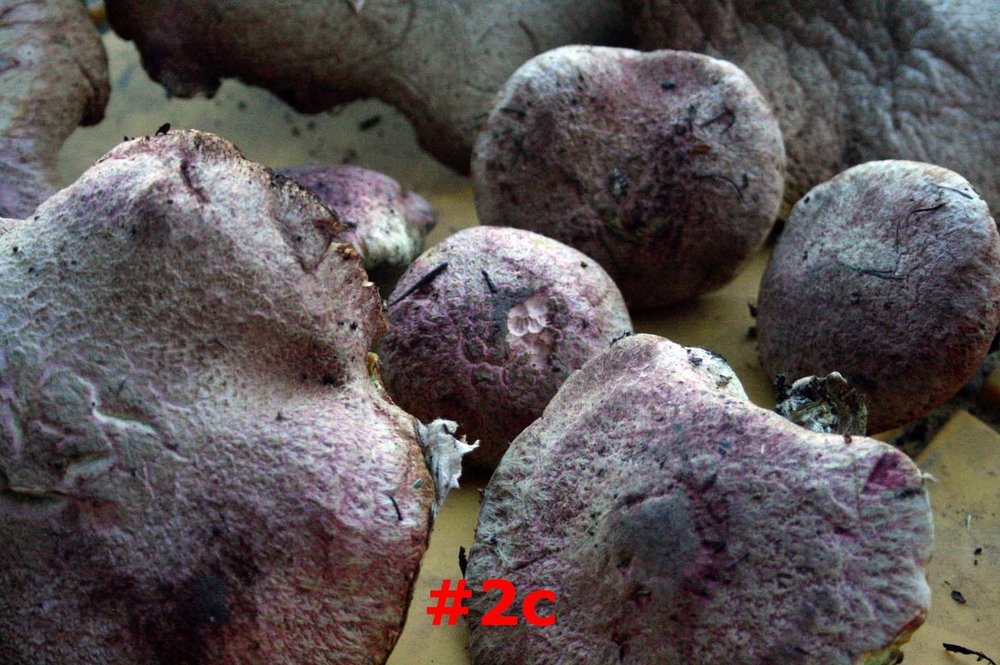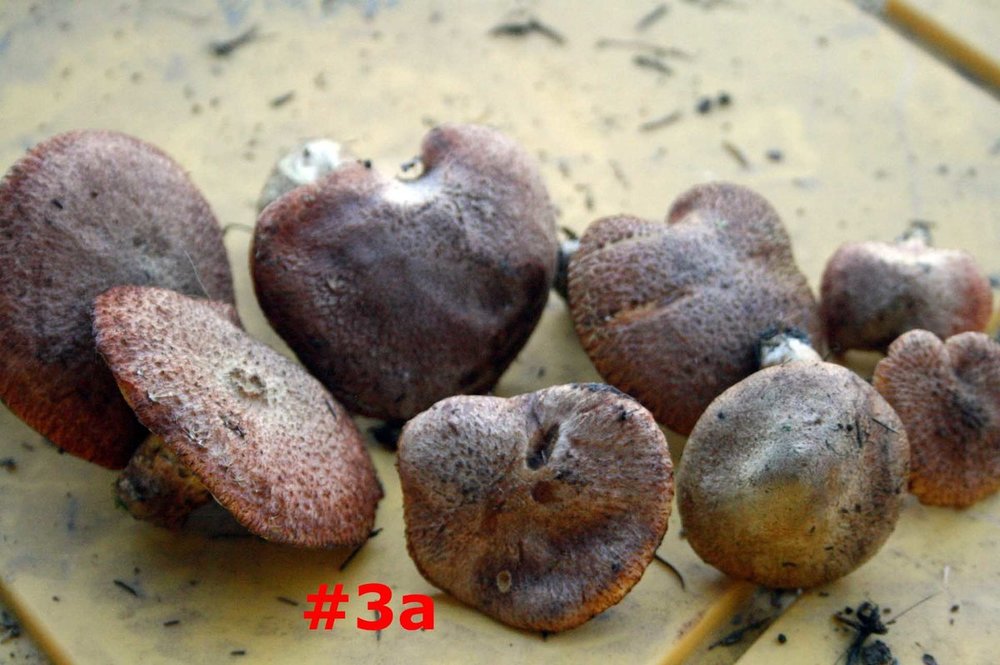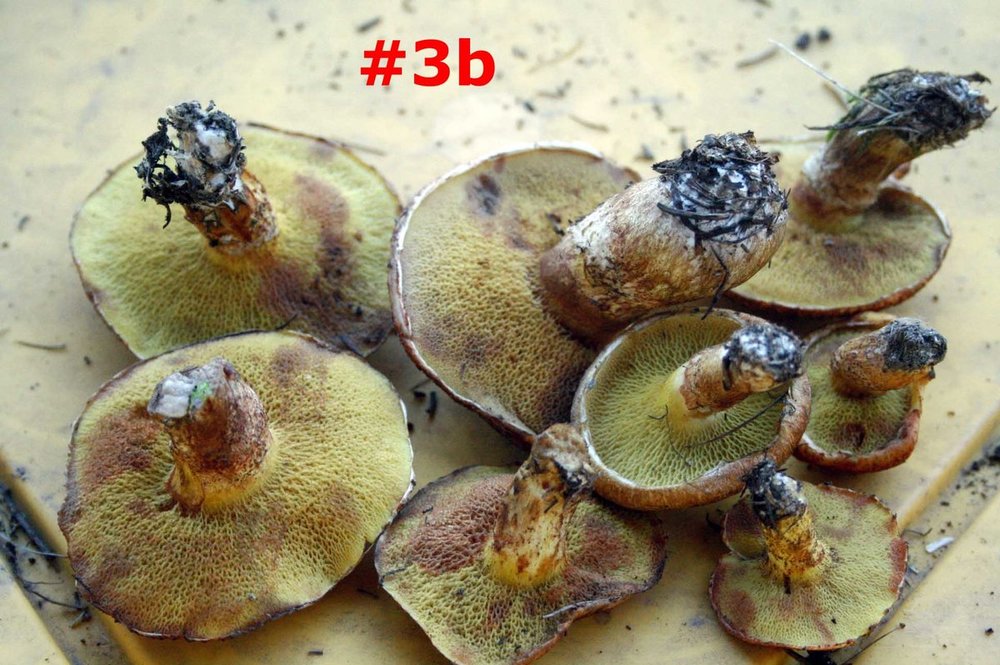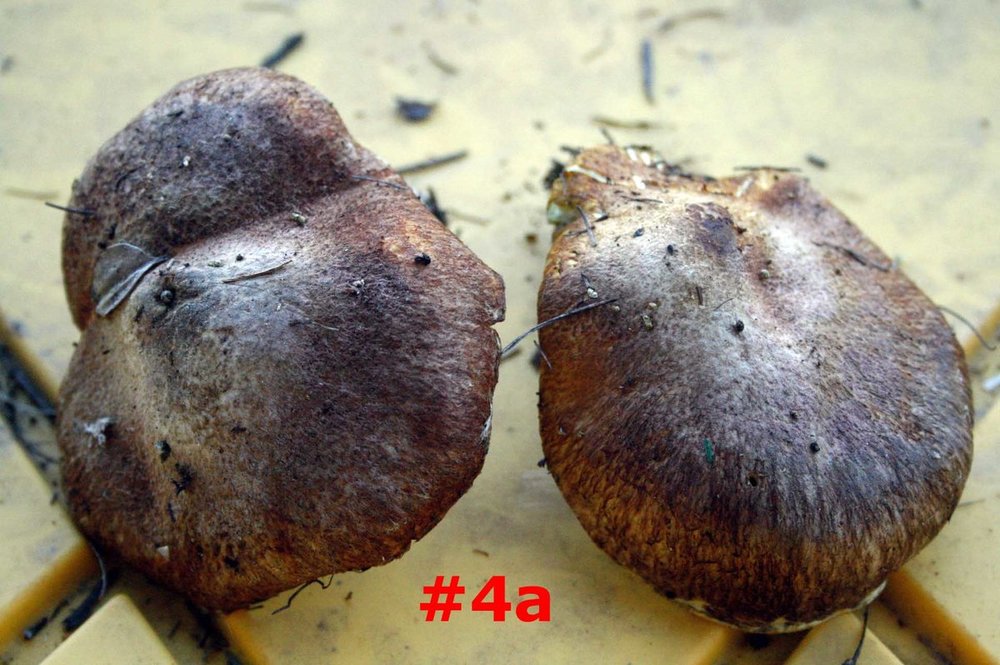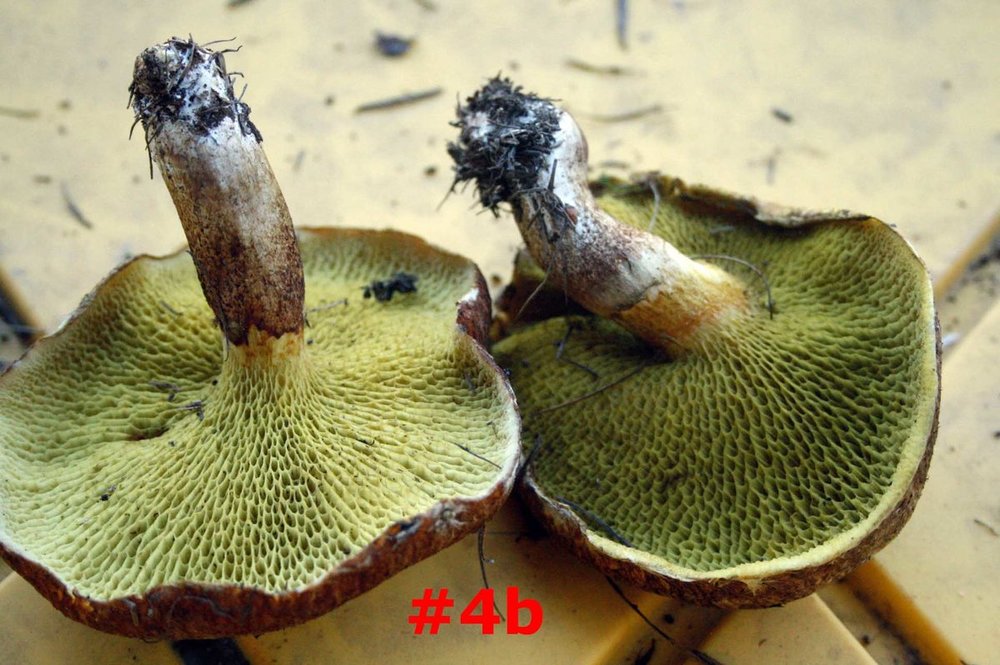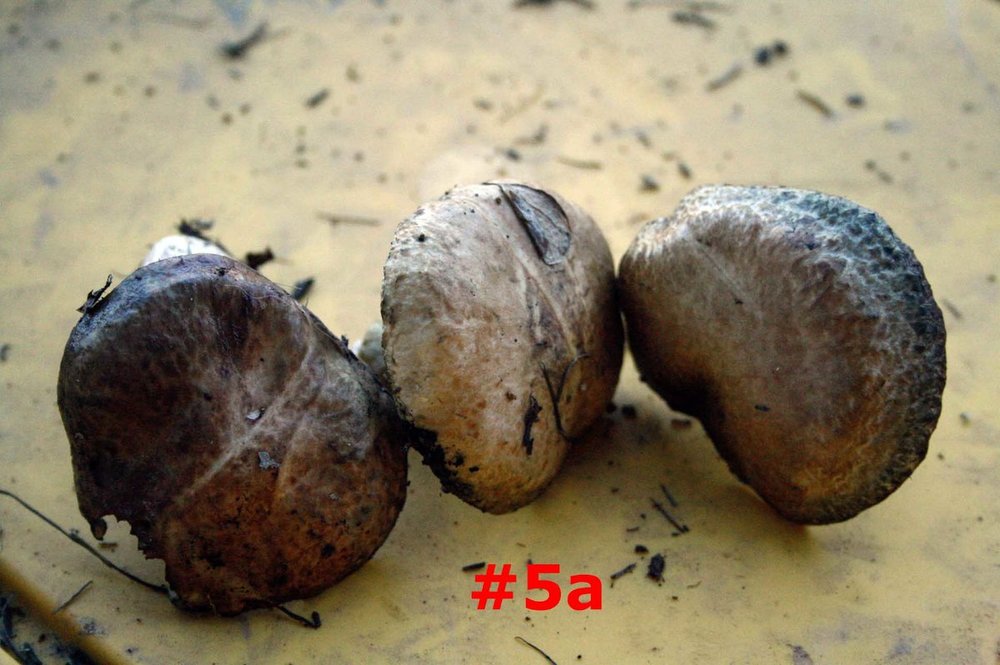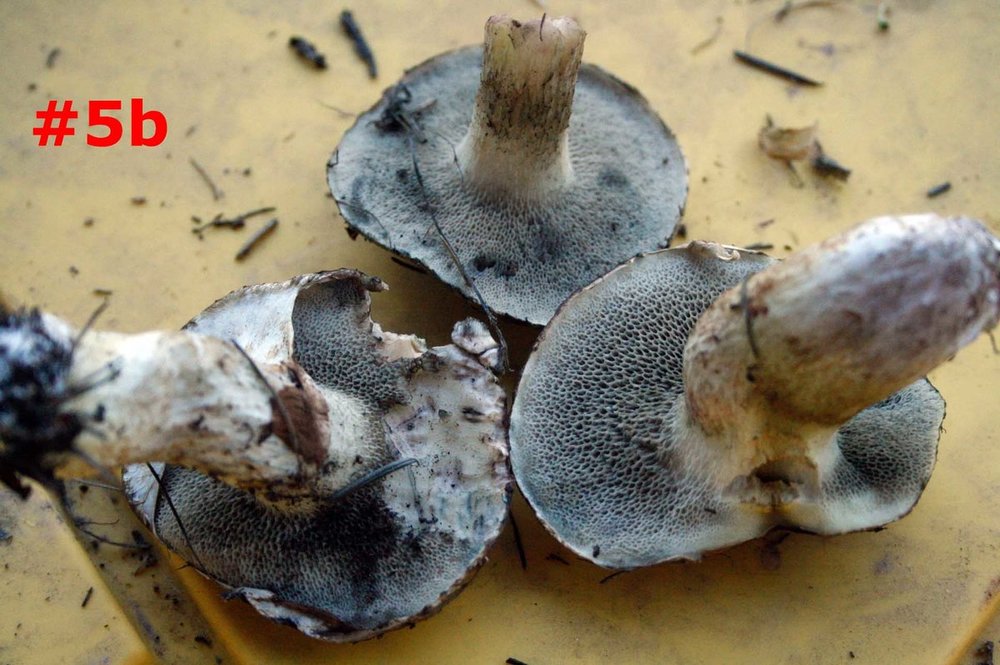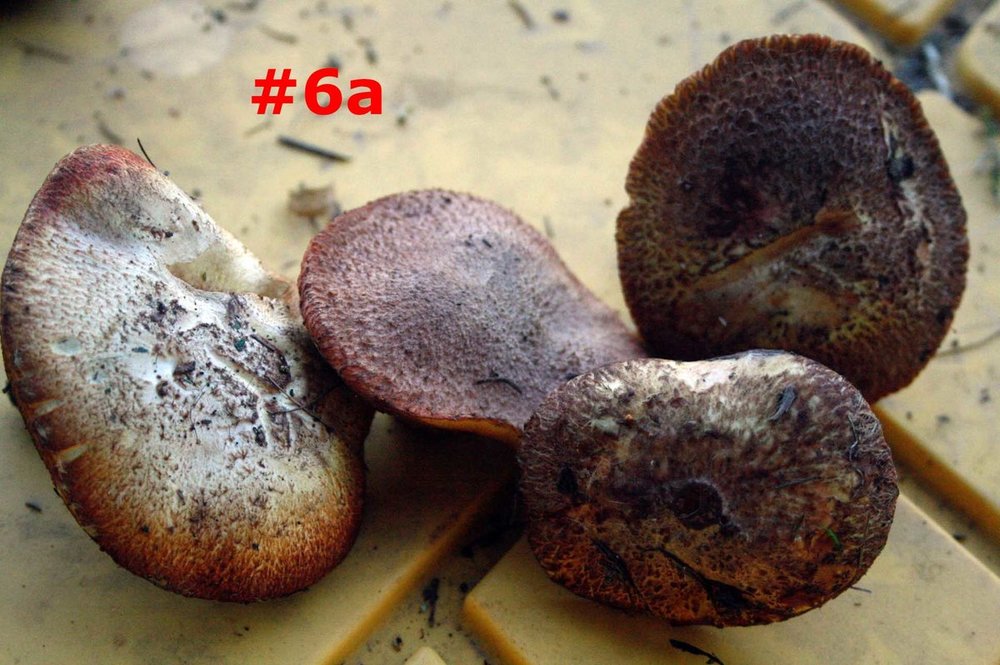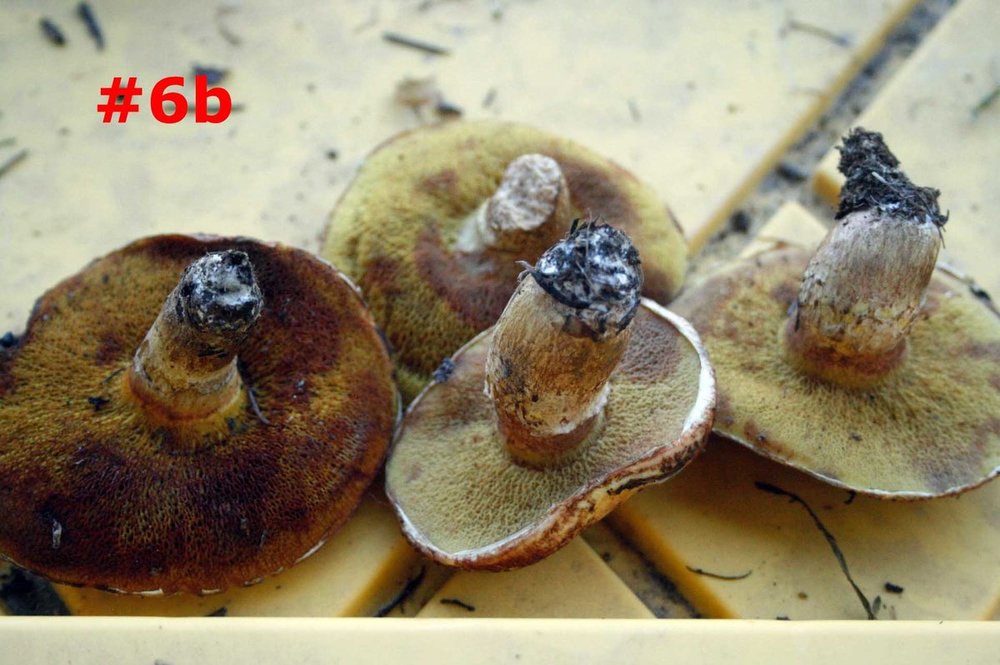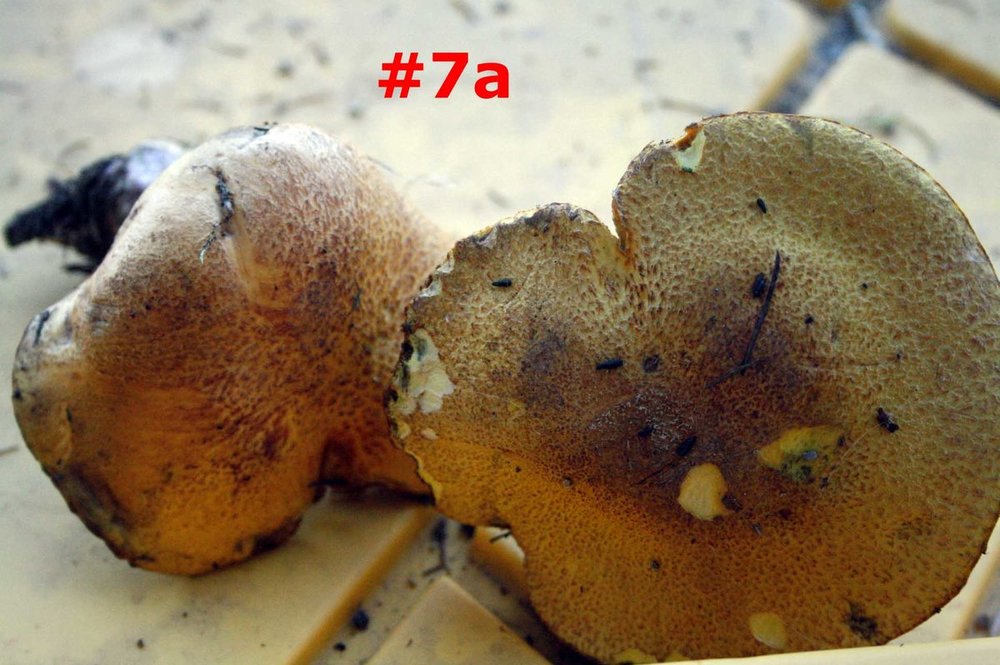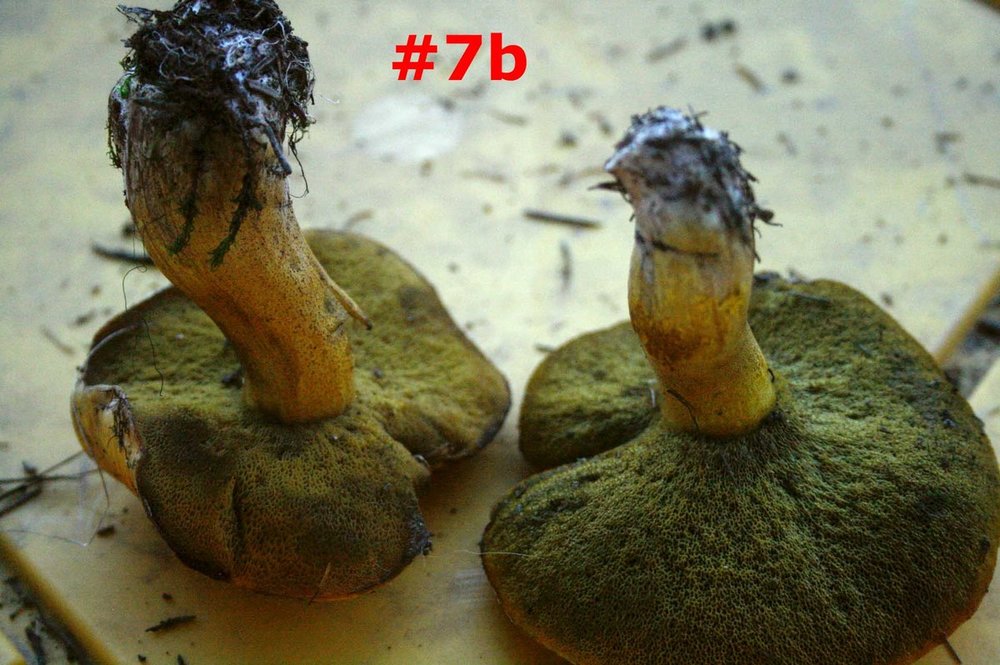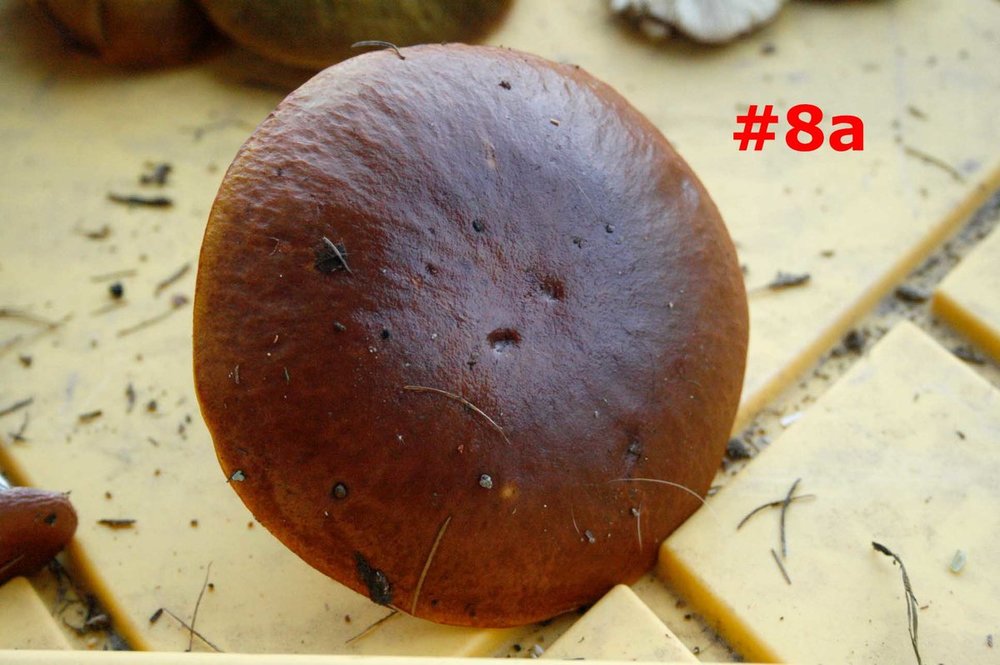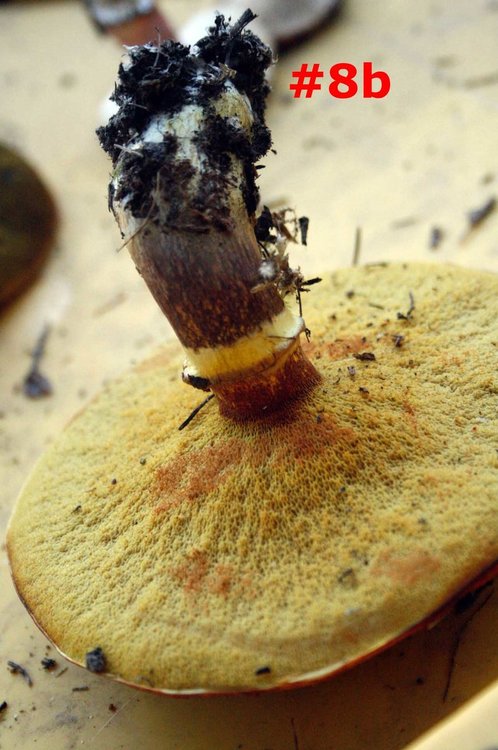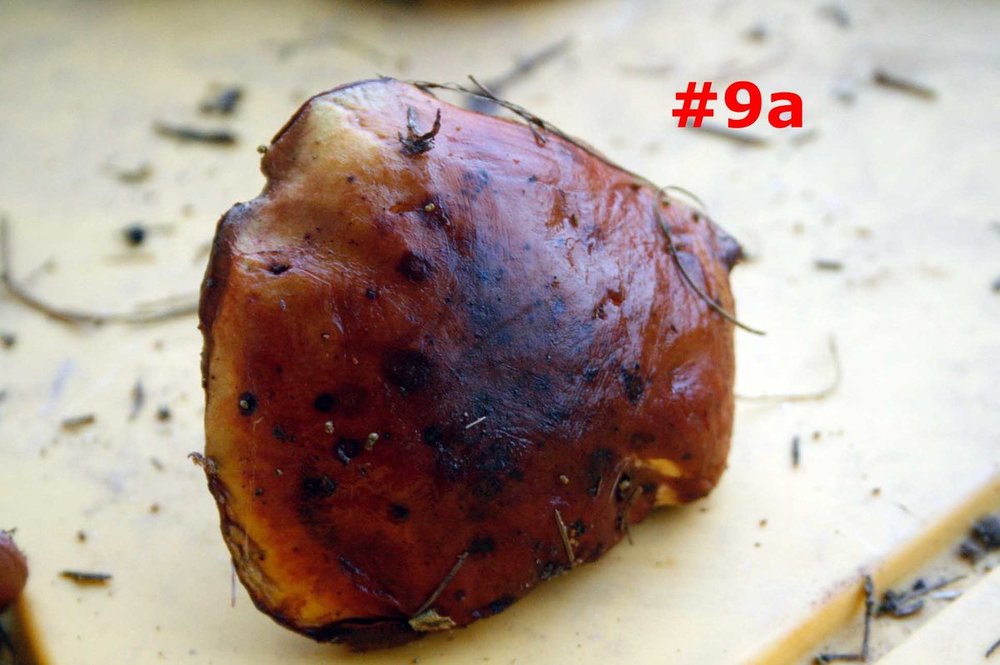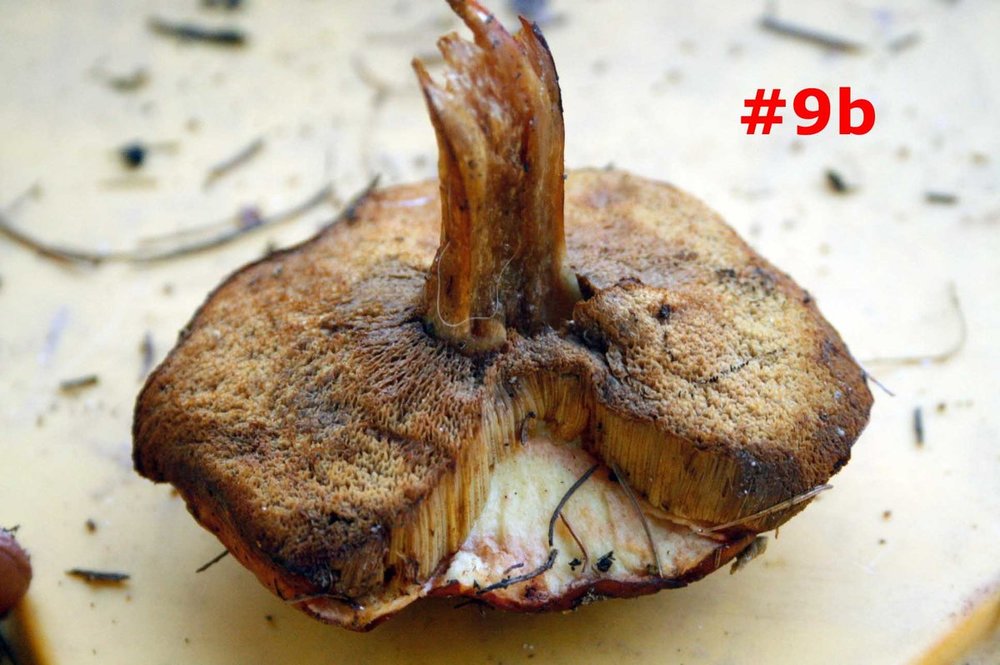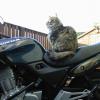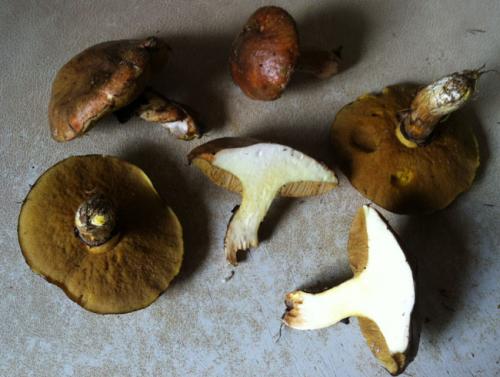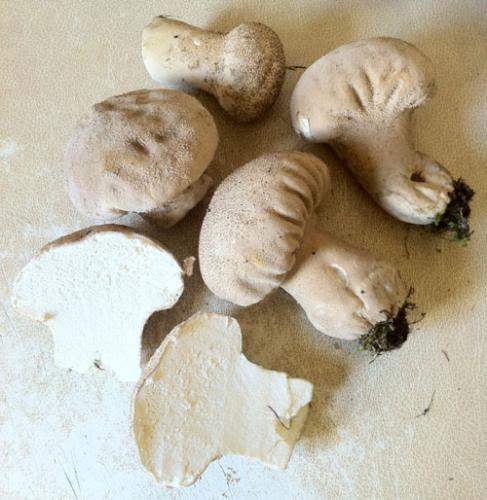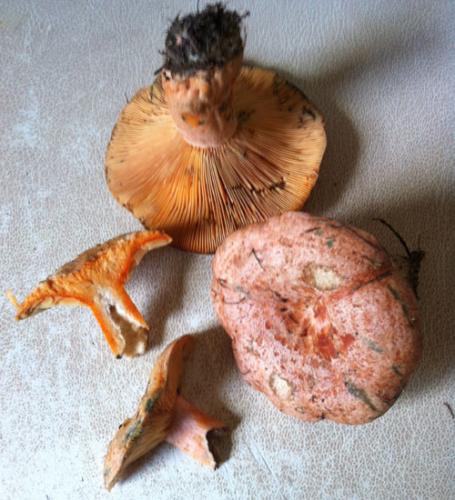Search the Community
Showing results for tags 'boletes'.
-
Hi! I'm very new to mushroom finding/foraging and though I'm not at all ready to eat any of my finds, I'd love help identifying this black mushroom I found on a walk today. I believe it was growing nearby to some oak trees. Its cap is black/dark brown in color and the pores are black. When broken apart the profile of the pores are grey and the flesh pale grey, with the pores and flesh turning reddish before going fully dark grey/black. I hate to assume it is a T. alboater but wondered if someone could point me in a good direction for finding out what it might be? Thank you so much! I'm excited to continue learning about this fascinating kingdom!
- 4 replies
-
- id
- help me id
-
(and 2 more)
Tagged with:
-
After getting up at 0330 in the morning and quietly stalking through the forest, I was able to photograph a small herd of boletes in their natural habitat. Although the weather has been dry, I believe the annual migration of these fine beasts will proceed as usual, with increasing numbers appearing in their normal, historical, grazing areas. With my silent approach, I was able to capture all three of these fine specimens, hopefully before they were able to alert the rest of the herdfungi. I will be conducting some tests involving garlic, butter, and quite possibly bacon...
-
So I've numbered the photos for easy reference. I wrote down my observations for each "group". I'm prepared for some of these to be the same subspecies, but they also might all be different! Picked at high elevation in mixed and very diverse mostly coniferous forest (larches, spruces, pines,+ firs), though I noticed one 'group' growing abundantly strictly under green alder near water. The mushrooms had been on a bit of a journey [in a cardboard box because the basket filled up too fast) so they bruised up a bit. NONE of them stained any colors. Just brown bruising. Here goes. Oh, and no ring was present/noticed unless specified. And all mushrooms were DRY unless otherwise specified. (I only found 1 wet/sticky/slimy jack). Also colors are much more vibrant than the camera would allow captured, but are otherwise pretty accurate. #1 CAP brown/buff, scaled. TUBES mustard yellow. STIPE smooth, no ring, colored brown, white, and mustard. #2 CAP cream + pink, scaled. TUBES soft yellow, semi-linear tubes, with tubes blending into stipe. STIPE yellow and cream colored, thick. RING present. #3 CAP red/orange/cream, scaled. TUBES mustard, large holes near stipe blending to tiny holes near cap rim. STIPE mostly yellow, smooth w/ some rust color. #4 CAP dark rust + maroon, scaled/flaked. TUBES mustard, unique coral-like w/ broad openings, blending into stipe. STIPE yellow/buff + maroon. RING present. #5 CAP buff, mostly smooth. TUBES grey, w/ larger holes near stipe blending to tiny holes near cap rim, with tubes blending into stipe. STIPE has grey netting texture, mostly cream colored, smooth, no ring. #6 CAP white to maroon to red to yellow, scaled. TUBES tiny, yellow/orange. STIPE yellow > rust > yellow ringed above ring, yellow/buff beneath ring, smooth with no texture andvery thick. RING present. #7 CAP mustard yellow, dry, irregular shaped, scaled. TUBES tiny and mustard yellow. STIPE smooth and mustard yellow, distinctly wavy (not straight). #8 CAP smooth, perfect, rich deep brown, shiny but not wet or sticky. TUBES tiny and mustard yellow. STIPE has red ring above the ring, yellow + brown beneath the ring, smooth. RING present. #9 CAP slimy and wet with a burnt color, smooth. TUBES mustard yellow. STIPE tore when trying to pick; mushroom was thick and stubborn. Avoided picking more. (found a few other beautiful non-bolete beauties I would like to ask about, but I will post those another time!)
-
Mushrooms are more vibrant than the camera picked up. I edited the colors in PS until they matched as closely as possible. Found amongst coniferous forest of mixed larches, pines, firs, and spruces, plus alders and a few deciduous trees, and within 100 feet of several other varieties of Jack boletes. Specifically, they were growing in leaf litter with rotting wood, somewhat different than what the other boletes seem to prefer. Staining is fairly swift and somewhat vibrant, fading to a dingy blue/brown bruise. Stipes are smooth, vibrant, and dappled with pin-prick sized brown dots of no texture. Dark spots on caps have a tight, low-profile, "flake" like texture. Caps mostly irregular shaped, smooth, and dry, up to 5"+ across.
-
Hi all, I'm new to the forum and would like help identifying some mushrooms we found yesterday. Boyfriend and I live in Scotland and have recently got the mushroom hunting bug. Summer has been good and there has been a fair bit of rainfall lately so stuff is popping up. There is a nearby green and leafy light industrial estate (units and workshops) where there seems to be a tonne of shrooms growing. These mushies mostly grow in grass, which I don't think fits the profiles of what I think we found, however there are quite a few trees and mature shrubs nearby and the land was previously a woodland area. A lot of landscaping went on that may have introduced spores too. Looks to us like what we have are mainly the following varieties, although we could be so wrong... Boletus aereus (Queen Bolete) - no blue/green staining on pressing the yellow pores, which have turned brown overnight, caps pale brown on the larger specimens, greasy dark brown caps on younger ones, fleshy smell. Lactarius deliciosus (Saffron Milk Cap) - green staining when bruised, mild fruity smell on a younger one that hadn't turned up at the edges but just a mushroomy smell on mature ones, pitting on the stems. The cut ones have now gone dark red where the brighter orange is. There is very little green staining on the caps which makes me think they are not false saffron milk caps. The caps of the larger/older(?) ones have turned a tan shade. Pestle puffballs - these are fairly big and the skin is quite dusty. While walking our dog in the country park we were also excited to find some porcelain fungus and the beginnings of the growth of Jews Ears (bonus points: there were numerous berries coming to fruition, we'll be back for these too!). We didn't get pics of those but attach pics of the ones in question that we think are edible, both intact and sliced. It would be great if we could get some advice on whether these are worth a try and if there is anything poisonous we could confuse them with. From what I've reasearched they seem ok, but a second, third, fourth... opinion of someone more knowledgeable is always welcome.
- 7 replies
-
- puffballs
- saffron milk caps
-
(and 1 more)
Tagged with:


